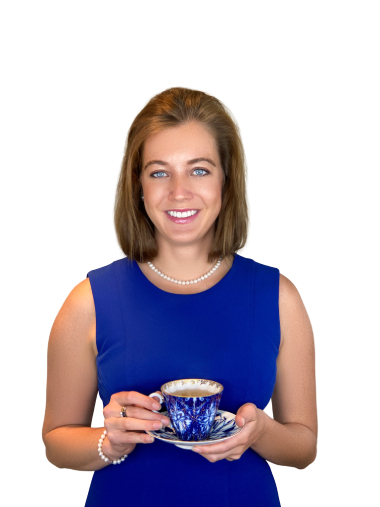
I hope you enjoy reading this blog post.
If you want me to do your marketing for you, click here.
Bubble Tea On Social Media
People love bubble tea, also called boba.
#bubbletea has 2.9 million posts on Instagram, and TikTok videos using the same hashtag have achieved over 26 million views.
This interest in bubble tea translates from how people spend their attention to how they spend their money; the bubble tea market is expected to expand at a CAGR of 8.3%, reaching US$ 3.23 billion by the end of 2032. Global bubble tea consumption is estimated to reach 475,501 tons by the end of 2032.
Bubble Tea and Social Media
Social media is critical for business owners to contact customers across demographics and drive product sales. Social media influences one in five consumers to buy food & beverages in China and India, and one in ten in Mexico, the US, Canada, Spain, Netherlands, and Australia.
"Local consumers want things that represent their own personal 'brand'. The drinks they enjoy should say something about their individuality." Jennie Gong, Feng Cha, Malaysia.
Nearly 2% of conversations on social media in the US mentioned "boba" in 2019, according to Social Standards Consumer Analytics. Such discussions have shown a 47% year-over-year increase, demonstrating boba's popularity as a social beverage.
Tea influencers and bubble tea influencers have driven interest in the product, disseminating product information, promoting brand visibility, and marketing bubble tea as a product category.
"Boba has performed well on Instagram and influencers use super logos, large logos acting as a photo backdrop, driving brand awareness" Andrew, Co-Founder of Boba Guys.
A social media strategy allows bubble tea brands to connect with their audience, create content that resonates with their target customers and promotes the sale of their product line.
Bubble tea is positioned to thrive on social media. It can use colours and textures to create a visually striking image. Vibrant ingredients, such as turmeric, beet, and butterfly pea powder, can capture people's attention and generate likes. Some ingredients, such as matcha and activated charcoal, can provide colour and allow the striking boba tea to be positioned as healthful.
Bubble tea can be differentiated on social media by adjusting the base ingredients, flavour, format and toppings, and distribution channel.
- Base ingredients: black tea, green tea, oolong tea, and white tea
- Flavour: unflavoured and flavoured
- Format: ready-to-drink and instant mix kits
- Topping: tapioca pearls, popping boba, jellies, and others
- Distribution channel: business-to-business and business to consumer
Social media is driving bubble tea demand. Increasingly drinks like bubble tea are "designed to be documented," according to Mintel, a well-known Market Intelligence agency. The aesthetic appeal of such beverages is a marketing tactic.
Flavour has long been the focus of beverage innovation. Yet the demand for aesthetic food and drinks necessitates innovations that engage more of the senses, such as sight.
Bubble tea caters to product variation, allowing a range of unique images and video content to be presented to consumers on social media. For example, instead of conventional black tapioca boba, bubble tea brands can use rainbow-coloured pearls, dragon fruit pearls, chrysanthemum pearls, pea flower blue pearls, and pearls like Pokemon balls.
"People want to share on social media what they are drinking and where they are drinking it, in a way that brings out their uniqueness. Instagrammable drinks and Instagrammable interiors are increasingly important." Jennie Gong, Feng Cha, Malaysia.
These aesthetic, multi-sensory innovations build a social media buzz for bubble tea, bringing the product category and some of its brands to the forefront of consumer attention.
"Milk tea brands need to keep innovating with their offerings and know that no idea is too outlandish to try." Heng Hong Tan, Mintel.
Bubble tea is popular among Millennials and Gen Z demographics, both of whom spend much time on social media. Many customers within these two market segments gravitate to aesthetically pleasing teas, bright tapioca pearls, and branded cups. Such concoctions make for eye-catching social media content.
Bubble tea venues are increasingly social gathering points. Savvy bubble tea shops create an atmosphere that invites visitors to grab tea and socialise. Bubble tea consumers can create social media content (e.g., Instagram stories), helping the bubble tea business appear in potential customers' feeds.

Bubble Tea Content By Social Media Platform
Bubble tea content on Instagram may have a self-promotional or commercial focus. Instagram offers a mix of bubble tea content, much user-generated content, and brand content that can gain visibility through #bubbletea.
There are a few established image styles used for bubble tea posts on Instagram, three of which are:
- A photo of bubble tea in the foreground emphasises only the product.
- A person holding bubble tea establishes a personal connection.
- Showcasing contextual consummation (e.g., the storefront, a DIY bubble tea recipe, a person drinking bubble tea).
Bubble tea on Pinterest has a clear focus. Images and videos typically reflect one of two focuses:
- Posts with aesthetic value
- Posts with educational value
They are not mutually exclusive.
Bubble tea brands may wish to share "DIY copycat recipes" for some of their best-selling beverages. Encouraging staff to create works of bubble tea art draws attention to their brand.
TikTok
Bubble tea content on TikTok is varied, and the platform lends itself to authentic content. There are several types of bubble tea videos on Instagram, three of which offer behind-the-scenes content from local businesses, provide how-to style videos (e.g., how to make a bubble tea at home), and appeal to bubble tea consumers' sense of self.
Appeal to the consumer's sense of self:
Bubble tea content on Facebook varies considerably, yet brands should be aware of three trends in bubble tea content:
- Consumers often repost content made for other platforms (e.g., TikTok videos) on Facebook, allowing for greater distribution of user-generated content.
- Bubble tea consumers publish content that showcases bubble tea within an intimate social context (e.g., a parent may share a post of their kids drinking bubble tea).
- Bubble tea brands publish ads on Facebook, leveraging paid social media to promote their products.
The voices of bubble tea consumers speak most clearly on Reddit. Authentic images posted by bubble tea consumers to other consumers can provide market-driven insights. You can learn what flavours, drinks, and packaging resonate with consumers. Some bubble tea brands post content that matches user-generated content's look and feel, and tests the market’s reaction to new flavours or other product changes.
Consumer stories:
I got 2 because i was craving it so much! The green one was called Crazy soda shot and the other Caramel Boba with sago 🤤
byu/ratkid425 inbubbletea
Test the market's response to products:
Hojicha White Chocolate Latte & Strawberry Jasmine Punch
byu/stopsakura10 inbubbletea

Bubble Tea Social Media Trends
- "Healthier" variations of the drink continue to drive consumer consumption.
- Boba is extended into other product categories (e.g., boba ice cream, boba hotpot, boba toast, boba pizza, and boba-inspired toys.)
- Consumption challenges (e.g., people drink a quantity of boba within 12 hours and share their experience on Instagram and other social media platforms. Boba challenges may grow a person's followers and likes on social media.)
- Increasing the intangible value of bubble tea with certifications: products can be certified organic, kosher, halal, gluten-free, vegan, and lactose-free.

Get Yourself Featured
If you're in the bubble tea industry, I invite you to share a quote expressing your opinion on the importance and effectiveness of social media.


I hope you enjoy reading this blog post.
If you want me to help you to sell more coffee and tea, book a call.


